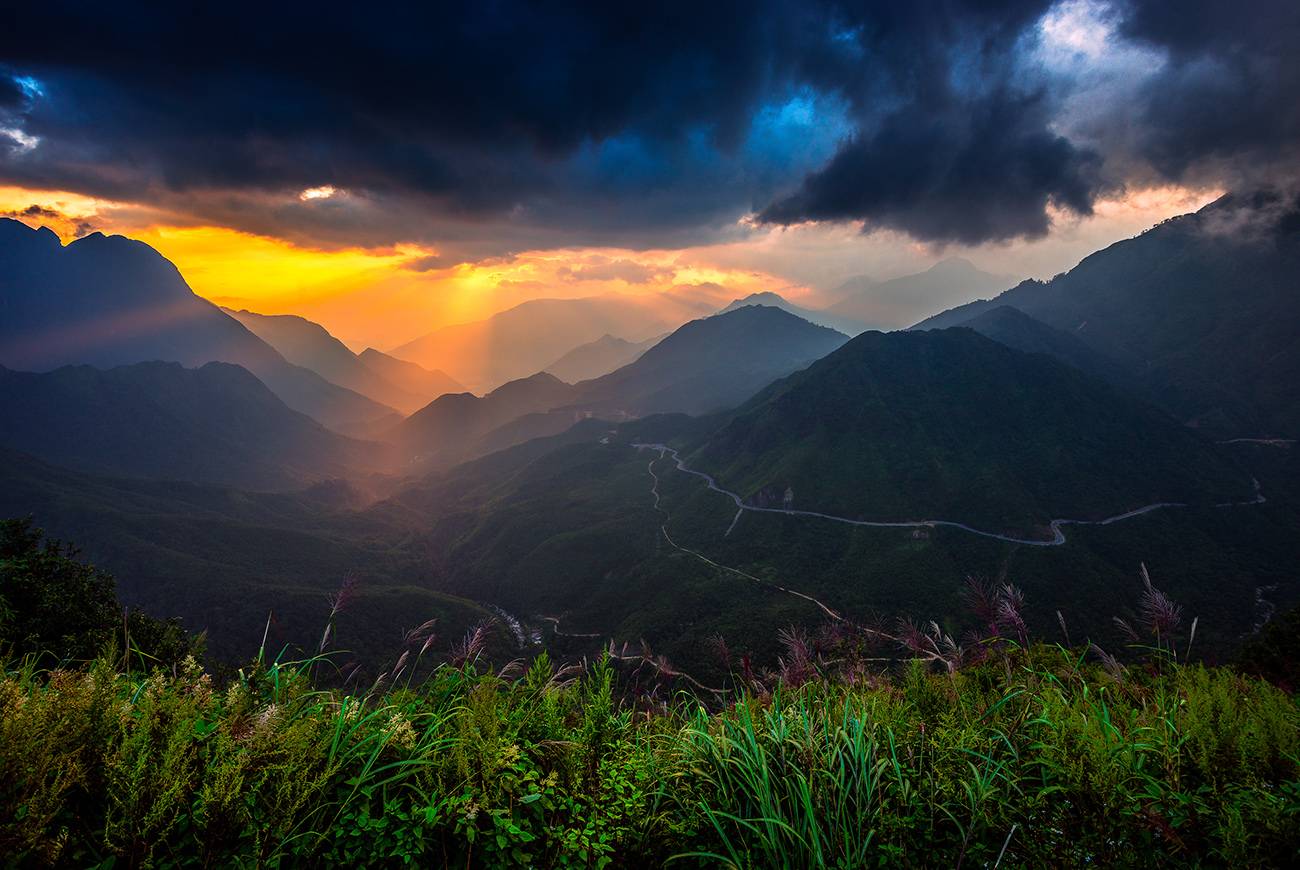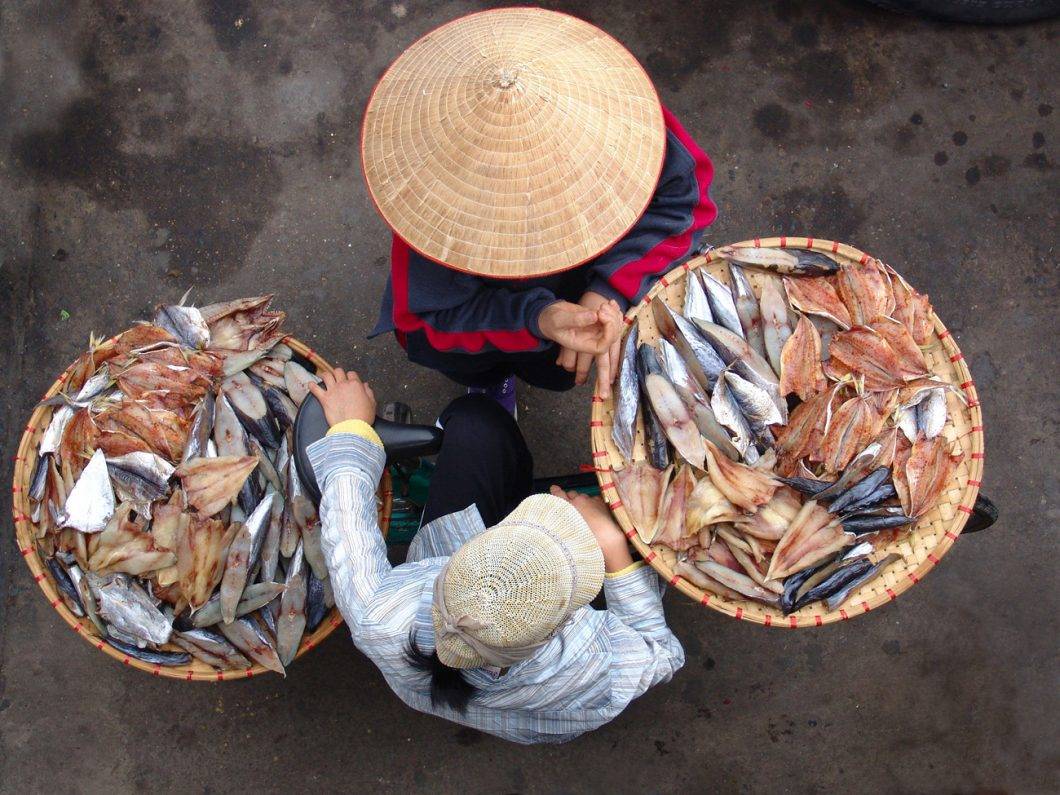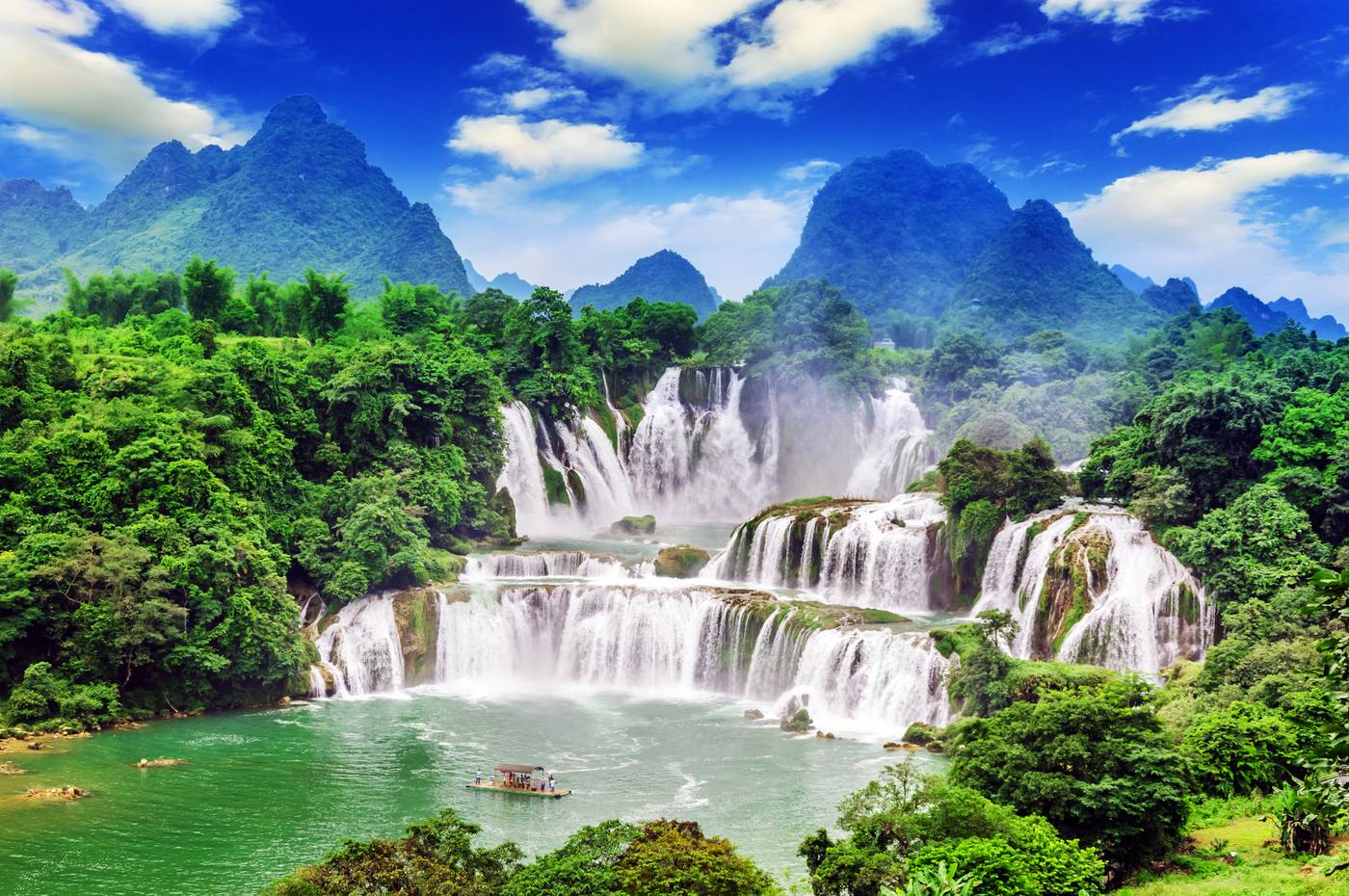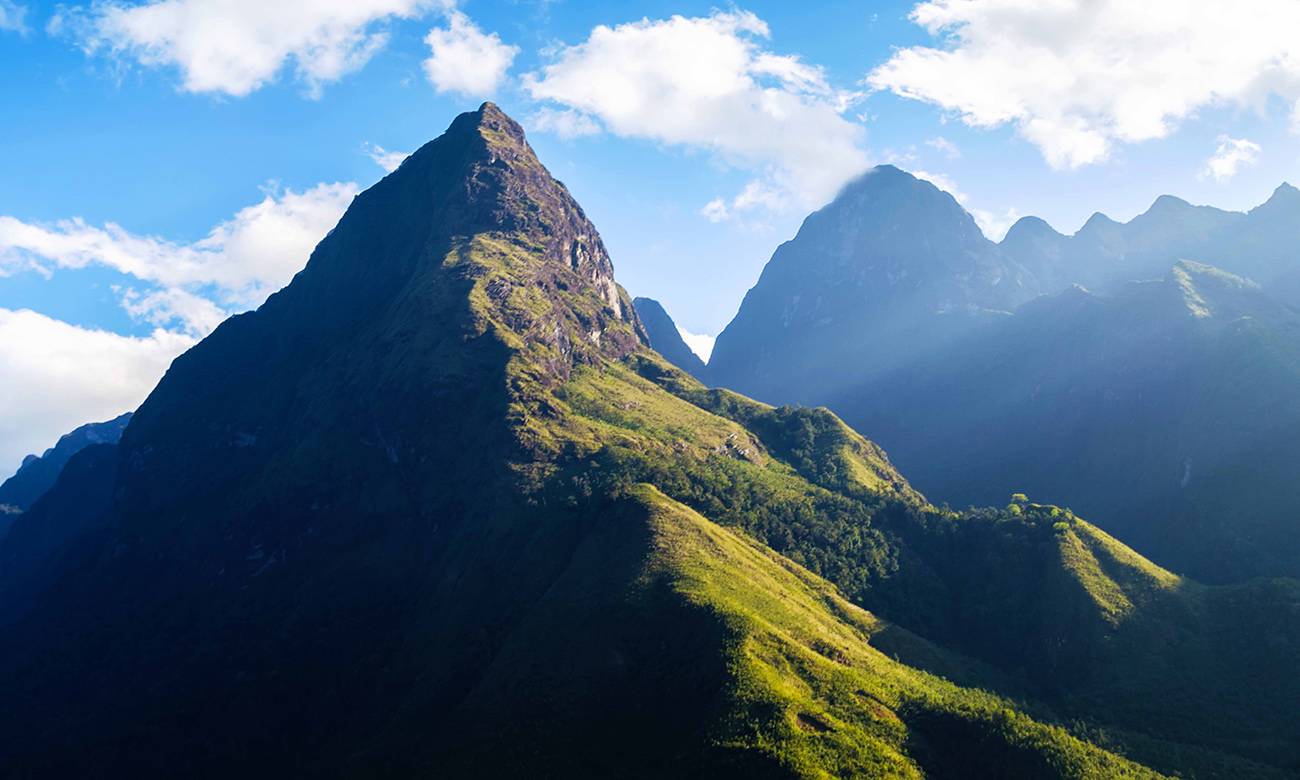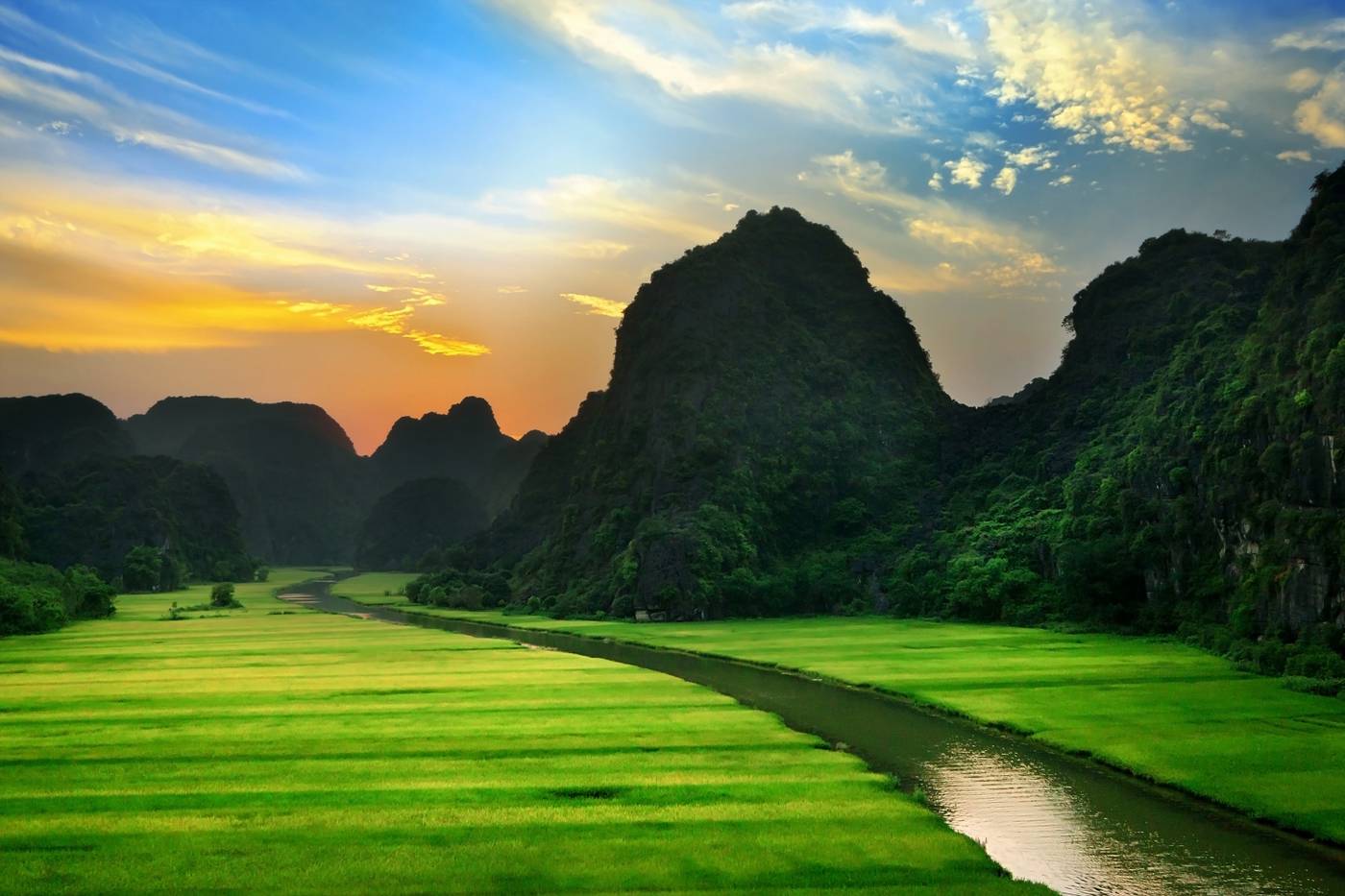
SA PA (BEYOND ECOTOURISM)
Sa Pa lies at an altitude of about 1500 m above sea level, and it has a fairly humid climate, which results in terrific images filled with mist, fog and somehow gloomy atmosphere. What makes the town even more picturesque is the Sa Pa lake and the majestic Fan Si Pan (3143 m) in the background – the highest peak of Vietnam.
What made it the most visited part of Northern Vietnam, however, are its fascinating highland tribes. Namely, Sa Pa unites 9 ethnic minorities, including the Kinh, Hmong, Dao, Giay, Pho Lu, Giay, Thai, Hoa, and Tay, with a total population of around 35.000 inhabitants.
WELCOME TO SA PA
Locals are well-aware of the marketability of their home-town. Therefore, do not let yourself be disheartened after the arrival in the town when you suddenly end up surrounded by a dozen of local ladies wearing traditional costumes, trying to sell you their handcraft or convincing you to hike with them to their hill tribe villages.
Many tourists get caught in the “Sa Pa eco-tourism” and book a comfortable homestay or one of the ‘hill-tribe trekking’ packages – there are myriads package tours available at every guesthouse in the town. Others prefer to hire a scooter and explore the surrounding countryside independently – this option definitely offers much more authentic and exciting experience, but also some extra time.
HOW TO SURVIVE THE ‘INSTANT TRIBAL INVASION’
Sa Pa is a tourist hot-spot and sadly, money has become a new type of drug. The ethnic minorities of Sa Pa can be persistent in trying to sell in the streets and follow visitors around the town. Often it feels quite aggressive and intrusive, but that is just part of travelling in developing countries and after you firmly say “NO, thank you” they will leave you alone. NEVER say “maybe later”, otherwise you will literally not get rid of them.
DO NOT feel sorry for the families and children who are trying to sell their embroidery (mostly fake), as it is predominantly us-Westerners who are responsible for the local people and kids begging in the streets and support growth of the local ‘mafia’. Hence DO NOT give them money or feel obliged to buy their products.
TRY LOCAL CUISINE
Sa Pa tourism is rapidly blooming and there is a great range of accommodation options, from the cheapest hostels to the luxurious grand hotels. The town teems with the restaurants, cafes, local taverns and markets. It is a shame that many visitors get stuck in the western r3estaurants and leave the country without giving a try to its local goodies.
If you are not a fan of bizarre food or a vegetarian, then try at least the local grilled Turtle Dove or Sparrow, Pig steals armpits or Black chicken. Also, remember to taste the legendary “Egg Coffee”, it is really delicious! If you have a “strong stomach”, do not forget to visit Sa Pa`s food market at the bus station and try the regional speciality – whole smoked dog. It is said “When in Rome do as the Romans do..”, at the end of the day, food is a big part of each culture.
EXPLORING LAO CHAI
Rent a motorcycle and explore the countryside of Sa Pa. Especially, driving towards the Chinese border is an extremely exciting, and lesser-visited area in the Lao Chai province.
The region presents great trekking opportunities and gives travellers a chance to interact with some of the most outlying ethnic villages in Northern Vietnam, e.g. the Red Dao. There will be some splendid rice terraces, deep valleys, wild rivers and waterfalls to admire, but more importantly, you will find yourself in the authentic environment that has not been devastated by tourism (yet).
If you are not confident to drive a motorbike, which is probably the easiest and most flexible sort of transport here, you can easily organise a tour with a local agent or at your guesthouse. Remember to negotiate the price!
THINGS TO DO IN AND AROUND SA PA
- Take a self-guided tour around the town – check out the colonial heritage buildings, viewpoints, museums and markets; Sa Pa Cultural Museum, Sa Pa Markets, Sa Pa Lake, Quang Truong Square and the Holy Rosary Church
- Walk around the Sa Pa Lake or rent a pedal boat on a sunny day (the boats typically operate on weekends)
- Visit the neighbouring highland tribes and stay at one of their homesteads to get under the skin of the local culture – Ta Phin, Giang Ta Chai, and Shin Chai villages are the most popular (great option for tourists who like comfort)
- Eco-tourism and trekking around the Cat Cat, Ban Ho villages
- Stroll through the markets of Muong Hom, Bac Ha, Coc Iy
- Discover Sa Pa`s waterfalls – Silver Falls, Love Waterfall
- Heaven`s Gate – a popular location for photography (right at the Silver Falls), rent a motorbike and get directions at the Sa Pa tourist centre, optionally there are tours to Heaven`s Gate too (count on a whole day trip)
- Trekking and camping in the Muong Hoa Valley (independent travellers can catch a shuttle bus from Topas Travel Office to the Topas Eco-lodge). Extraordinary experience on a path less trodden!
- Mountain biking is increasingly popular with adventurous travellers (you can hire one in the town where you will get a good map with marked trails in the area)
- Climb Fansipan (3143 m) – see FANSIPAN TREKKING
- Have a relaxing Vietnamese massage in one of the numerous spa & massage places
- Book a cooking class at the Hill Station Restaurant – recommended for all food lovers!
WHEN TO TRAVEL
Best time to visit is March-May (warmer weather) or October-November for cooler and clear days. However, for the most spectacular views of rice terraces in their full abundance visit Northern Vietnam in August and September, just before the harvest starts.
NOTE
Weather in Sa Pa is often foggy, rainy and cold. It rains abundantly throughout a year and weather changes all the time. However, this is what often adds to the dramatic scenery and atmosphere.
Also, the rain makes landscapes verdant and lush and paddy fields very fertile.
HOW TO GET THERE
Fly to Hanoi.
You can book a quick day trip from Hanoi to Sa Pa via a tourist agent or your hotel but it is recommended to take at least 3 days for exploring Sa Pa. The best option is to either catch a local day bus (great for the scenery and low cost/$20 USD) or travel in comfort and luxury on the overnight tourist train for $70-100 USD, depending on the class.
To move around locally, a very convenient option seems to be hiring a motorbike and searching around the region at your own pace. Those who do not feel confident to drive can book any sort of tour they wish, once in Sa Pa.
For all international flights check out www.skyscanner.com or www.momondo.com





